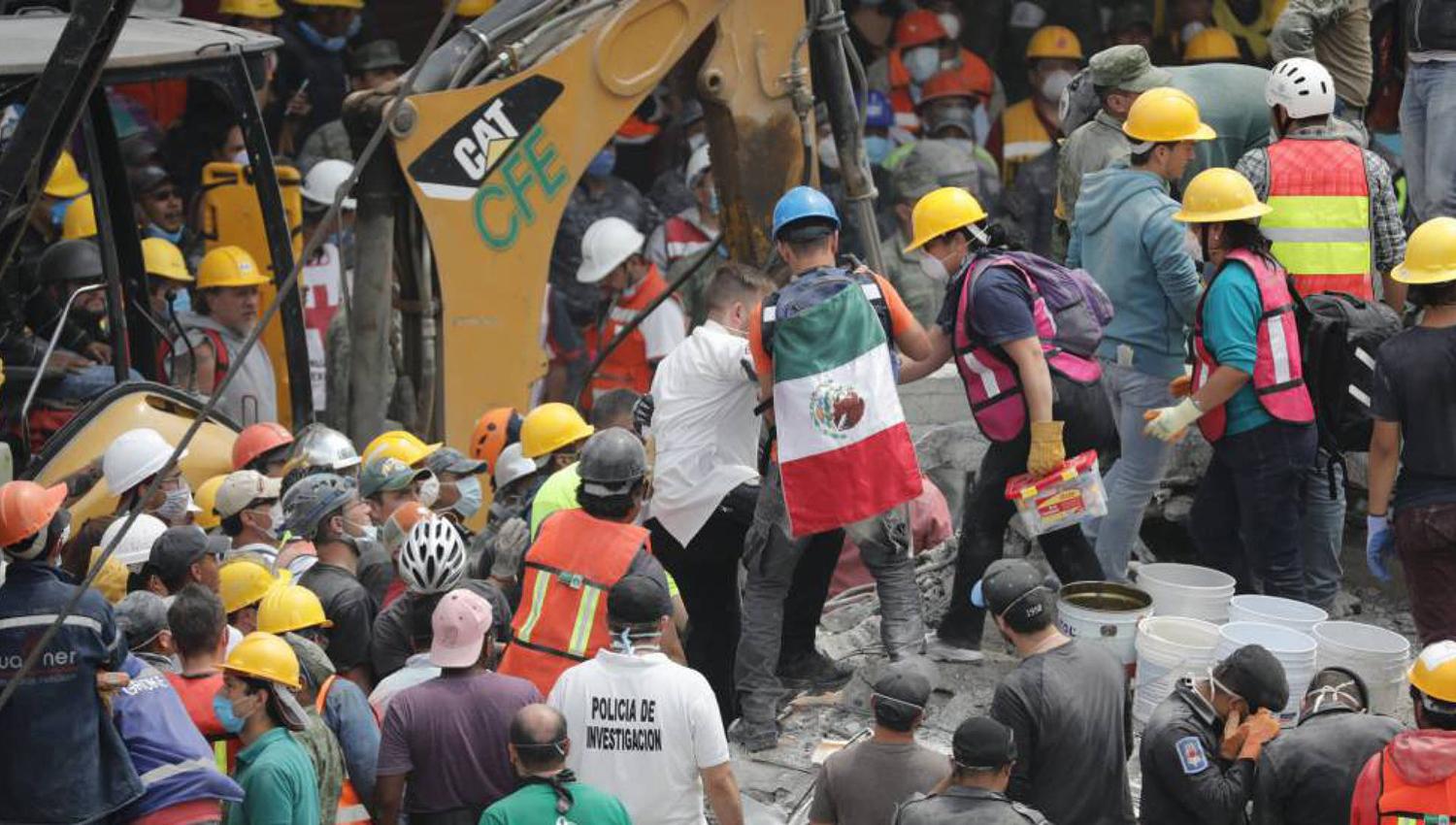[dropcap size=big]T[/dropcap]he often repeated line that "L.A. is the second biggest Mexican city in the world" is rooted not just in a demographic and historic association, but also in a geological quirk — both Los Angeles and its sister metropolis of Mexico City are seismically active. But down there, the shaking happens a bit more than most other places.
For people like Wendy Aguilar, Ebony Bailey, and Roberto Cabrera Owens — people like me — the links between the United States and Mexico are palpable in the way we look, speak, and move about the world. Often in the span of a single day, we can both feel from "here" and from "there." We can also feel sometimes like we are from neither ... In a moment of tragedy, which 'side' of our selves turns on in response?
The following is an L.A. Taco audio documentary, on Mexican American experiences during the earthquake of September 19, 2017, in central Mexico. Thanks for listening.
DANIEL: A year ago, on September 19, 2017, at 1:14 pm Central Standard Time, an earthquake hit central Mexico that was felt over much of the bottom half of the country. The U.S. Geological Survey recorded the epicenter as just near Ayutla, Puebla, southeast of Mexico City, near the border with the state of Morelos.
[Montage audio]
The shaking was so prolonged and violent from this quake, that many people who experienced it remember believing that it was actually ‘the end of the world.’ Buildings fell. Churches collapsed. And by October, the official tally of the quake’s victims reached 369 fatalities.
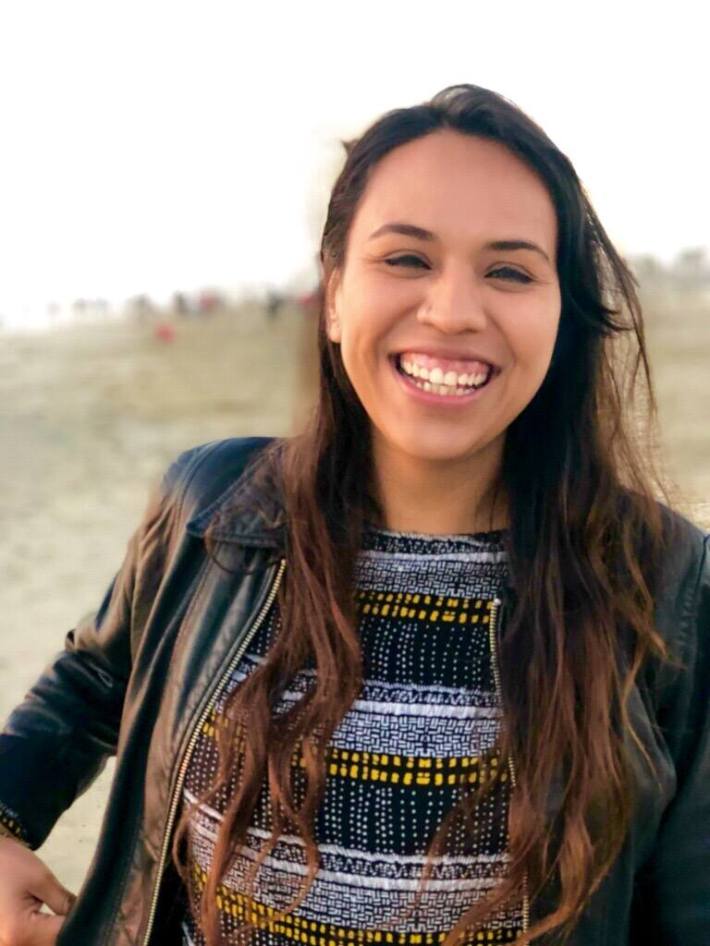
That day, Orange County native Wendy Aguilar was in Mexico City, which, it’s worth remembering, is built on a former a lakebed. Aguilar was standing in the central walkway of leafy Alvaro Obregon avenue in Colonia Roma. She had been feeling ill that day, and initially did not understand what was happening around her.
WENDY: I saw cars stop and I go, ‘OK it’s my turn to keep walking', and I proceeded to keep walking, and that’s when a girl grabbed me. She said ‘No amiga, it’s a terremoto.' Like chill, stop,’ and I did.
I stood there …
DANIEL: Ebony Bailey was at an administrative building on the campus of UNAM in southern Mexico City. She’s from Porterville, California, and she’s studying film, working on a subject that is close to her heart, Afro-Mexican identity.
EBONY: I was at school about to get my ID card, like about to go to the ventana, and then the earthquake hit, so I immediately ran downstairs, this señora grabbed my hand is like ‘I know you’re not from here, you’re not used to this … I just want to make sure you’re OK!'
DANIEL: And Roberto Cabrera Owens had just dropped off his daughter at school. Roberto’s dad is from Mexico City, but he was born and raised on the East Coast, between Maryland and New York. Now Roberto is a regular old Mexico City family man, with two Mexican-born daughters, but he can never shake his American drawl.
ROBERT: This was like 45 seconds of intense movement, to where you felt you were going to fall down. You couldn’t keep your footing, you couldn’t stand up or walk.
[Montage audio]
DANIEL: Back here in Los Angeles, when the quake initially hit, and the first images began streaming in, I think a lot of us were … just shocked. Numb. A friend of mine came over with a bottle of mezcal and we wept till our eyes turned red, and drank. We felt a sense of panic, uselessness, not knowing what to do.
So some of us got together and actually started a fund drive and fundraiser, something neither me or my co-organizer, artist Daniel Gonzalez, had ever done. Something about this quake just hit our hearts. Mexico City was a place we all deeply loved. We sold art, invited DJs, and gathered at Superchief Gallery in downtown, to also help each other heal from the trauma of simply having witnessed via the Internet the devastation that happened some 1,500 miles away …
INSTAGRAM AUDIO: [See below]
I lived in Mexico City for a good chunk of my 20s and 30s. We had earthquakes a lot, a few strong rattles a year, but rarely were they deadly.
[Montage audio]
Mexico City feels earthquakes strongly even when they are located hundreds of miles away. The city was earthquake-hardened. We had drills, PSAs on radio and in the metro, constantly touting earthquake preparedness. This quake-alert culture has its origin to one incident in 20th Century history — the earthquake of September 19, 1985.
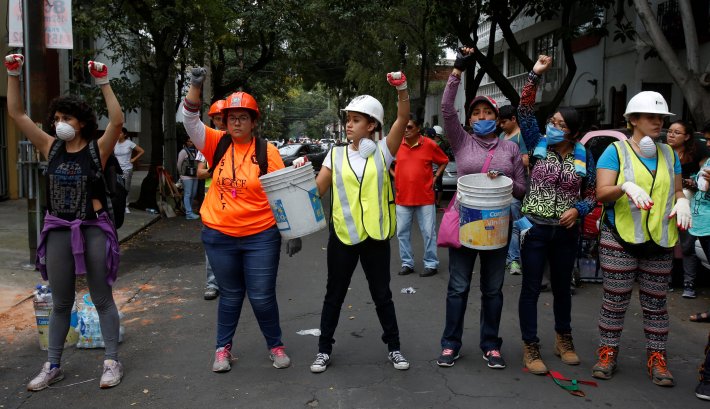
The coincidence is pretty diabolical. That’s right, a previous earthquake on this very same day, in 1985, toppled hundreds of buildings in Mexico City, and killed more than ten thousand people. No one alive today thought they’d live to see another earthquake as bad as 1985 — and certainly not on its very anniversary.
Roberto was with his 11-year-old daughter.
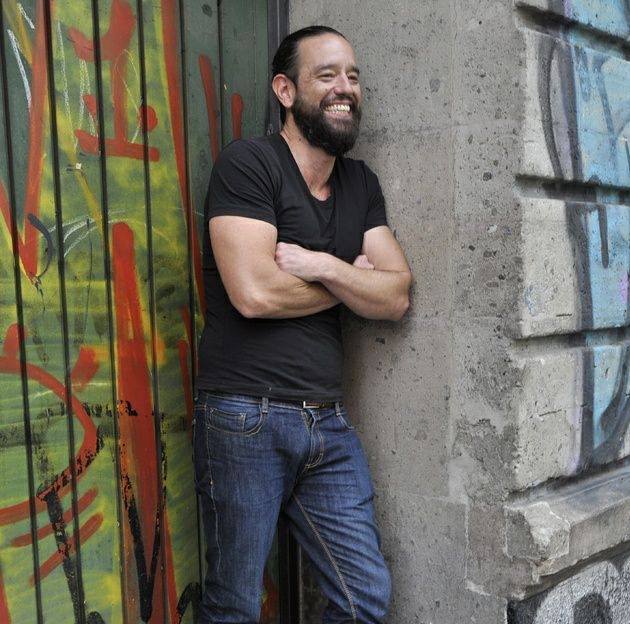
ROBERTO: The earthquake drill happens, we’re in the subway, and my daughter starts to ask questions, ‘Would it be better, in the subway or on the street?’ A lot of parents try to tell their kids like a softer, gentler version of reality, so as not to scare them, and I’m not really that guy, so I was like, ‘Listen at the end of the day, whether you’re on the street or on the subway there could be an earthquake so powerful that it just destroys everything … turns it all buildings above the ground above dust.' And she’s looking at me, like ‘Great, I’m terrified now, can you just hold me?’
So all of this morning we’re with the earthquake on the mind. From ‘85, to the earthquake drill, and everything was like, This is Earthquake Day. And for it to have happened on the same day … I’d like to talk to a statistician. To me it's mind-blowing. How likely is this? How probable? That this would happen on the same day, 32 days later?
DANIEL: In Colonia Roma, Wendy Aguilar witnessed how the rescue efforts across the city began instantaneously with the moment the shaking had stopped. Across the street from her workplace, at a little fonda on Orizaba, the side of a brick school building had collapsed. It took her less than 30 seconds to reach that corner.
WENDY: I got there and there was already people sacando escombros, trying to see if there anybody there, because there was a car parked there, and we didn’t know if anyone was on that corner when the tower fell. And people were already helping not even a minute after the earthquake stopped there were hundreds of people on that corner already, like helping ...
It was impressive, devastating, you don’t know what to do, how to help, and I remember thinking, ‘Why did I wear sandals today? There’s so little I can do myself to help now.’ ...
RELATED: Images Show Rescuers Reaching Fatalities Of Fast-Moving Ash Cloud of Guatemala Volcano
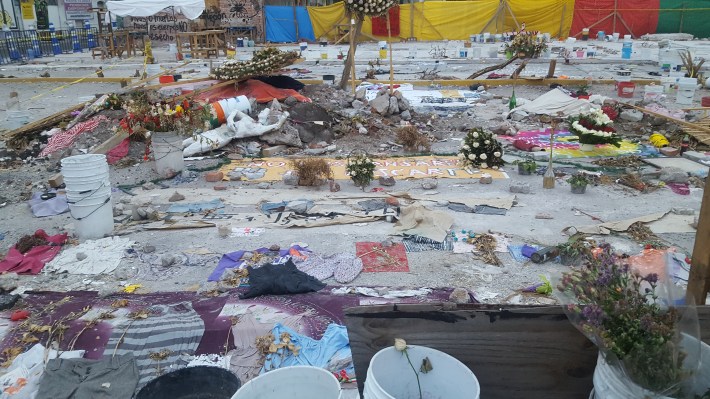
DANIEL: Although they’d later find out no one there had been seriously hurt there, signs quickly showed that the magnitude 7.1 sismo brought down dozens of buildings in the soft ground of Mexico City. [...] A school named Rébsamen killed a group of 27, mostly children and teachers. Apartment buildings in Condesa were flattened. A office tower with totally open floor-plans came down like a stack of pancakes, killing 49. And on Calle Bolivar, a building housing a fabric company also collapsed, killing 15 people, mostly women.
As it turns out, Wendy later discovered she knew one of the victims. Erick Acosta, who died at the building on Alvaro Obregon, was a cousin’s brother in law to Wendy.
WENDY: His wife was there were single every single day … she wouldn’t leave ...
DANIEL: Wendy had a scheduled flight back to visit Orange County that very night. Her family is originally from DF, and her parents survived the '85 quake. Her own father had volunteered and helped at the disaster sites. This time, though, Wendy’s parents was not having it.
WENDY: Her initial reaction was like, 'You need to get back here now,' and I’m just like, I can't leave at this moment, because I was actually supposed to fly out that night, I was supposed to fly out to California the day of that earthquake
DANIEL: You didn’t fly out obviously.
WENDY: Obviously not … the fact that the airport itself had closed. I didn’t feel like it was the correct thing to do to, leave at that moment, when there was so much still needed, that still needs to be done here.
DANIEL: What was your parents’ reaction to that?
WENDY: I told him he also went against his parents’ wishes … My dad was like ... he hung up on me. He hung up on me.’ [...]
DANIEL: For Ebony, her family ties to Mexico and the '85 disaster were suddenly clear again.
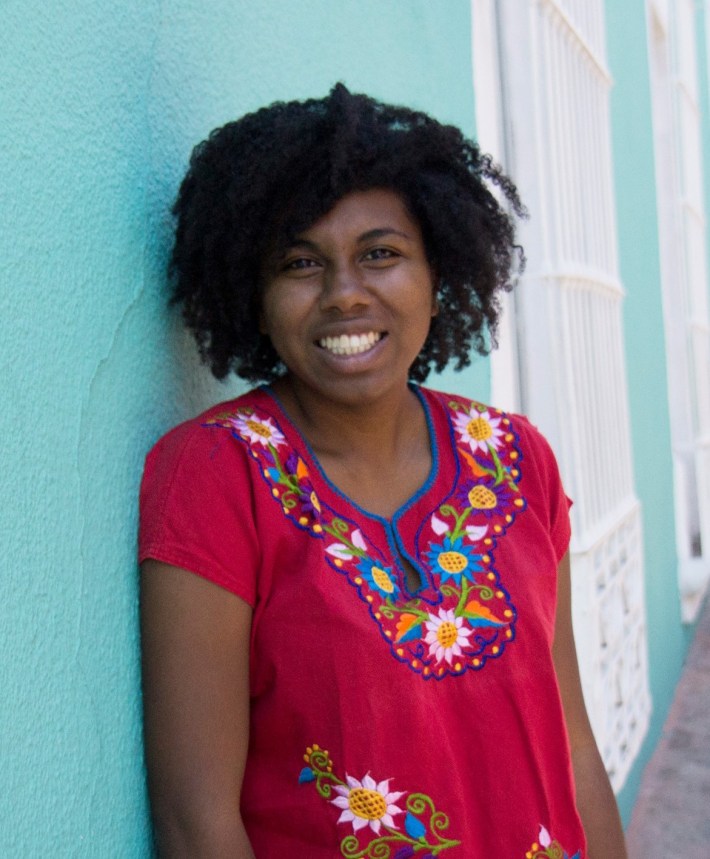
EBONY: When '85 happened, my aunt wasn’t answering the phone, and my grandpa and my mom were freaking out, so they drove down to Mexico from Porterville. And my mom felt the aftershocks, so she knew how it felt. That’s why she was freaked out about me.
What I really liked about volunteering in Mexico, I guess, I felt like a foreigner — well I always feel like a foreigner, especially because I’m black — but I remember feel like, Oh, I need to be with my people right now.
DANIEL: What did that feel like to you?
EBONY: It made me feel good that the people were there for the people … the government, they’re not really doing much … What? Three thousand pesos to fix up your house, that’s nothing.
DANIEL: Roberto gathered his family that day. Everyone was safe. For him, the quake and response seemed to reinforce his love for a city that — like Ebony and like Wendy — he had chosen as his own as an adult.
ROBERTO: I’m a father of two girls. I do lots of different jobs, I guess.
DANIEL: You’re not a deportee, you moved here on your own.
ROBERTO: Of my own volition, I’m in self-imposed exile from the United States … But I came when my father passed away, 14 years ago. That’s when I came, and I liked it, so I stayed.
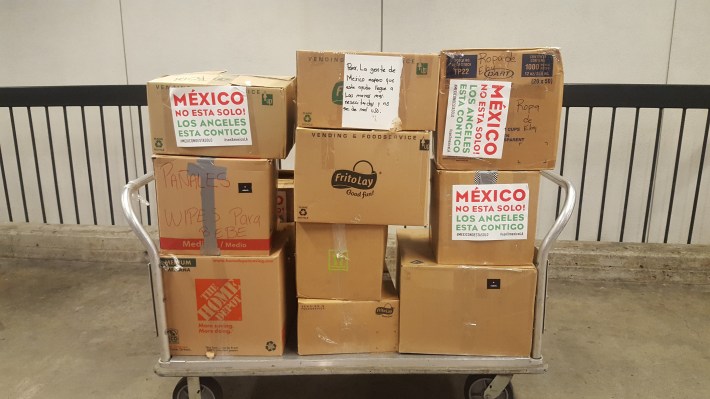
I felt even more obliged to do my part, whatever it was. [...] It got to the point that a lot of places were turning people away, ‘This is a mess. If you wanna help, the best thing you can do is get outta here!’
DANIEL: What was your reaction to the response you saw on the streets? There was this kind of thing that people were just coming out way too strong, you know?
ROBERTO: I think this is a real Mexican attitude: we’ll fix our own problems, we don't look to the government we don’t look to the police if there is something that needs doing we’ll do it, and we’re gonna do it, and get into it. … Just what needs to be done, let’s do it.
DANIEL [TO WENDY]:
Why do you feel as a Mexican American, why it’s important for you to be here, and why do you feel a connection to this place?
WENDY: My response has always been the people. People here have absolutely nothing and they offer you everything …
EBONY: I feel like if a big earthquake happened in L.A. nobody would know what to do. Here, because '85 happened, it was catastrophe, there was still chaos, but people knew where to go, how to help, because they did it before. Or if they didn't do it, their parents did it. So they grew up listening to what they did.
This kinda sounds political but, people really don’t need their governments. In times like these, the people are the ones helping each other.
DANIEL: As of this year, Mexico will now commemorate two devastating earthquakes on September 19. The earthquake that killed thousands 32 years ago, and the one that killed hundreds — but hurt just as much to so many of us — just one year ago.
And as before, incidents of corruption, mismanagement of rescue funds, and bureaucratic inefficiency appear to be hampering the efforts to rebuild the structures that came down and repair damages to the survivors.
Mexico has now had two “Big Ones” in the last 50 years. It’s only a matter of time before a catastrophe of that size hits L.A. … Ask yourself, Are we ready?
RELATED: Taco Trips – Pozole de Moctezuma Makes the Best Guerrero-Style Pozole Verde in Mexico City
[Copyright LA Taco 2018/Engineered and Edited by Erick Galindo]
